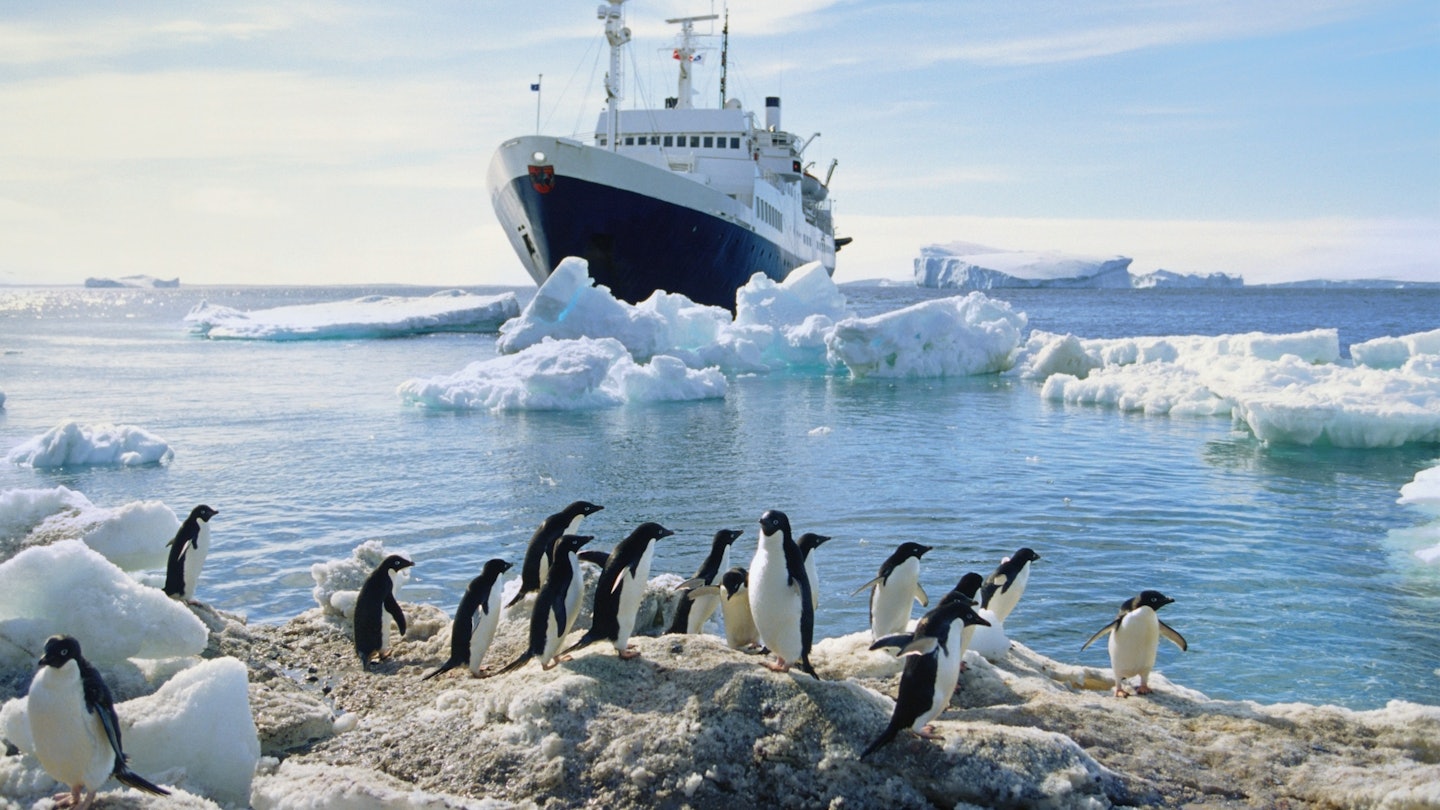
The 30 best countries, cities and regions to visit in 2025

Antarctica's tourist season starts in November © DreamPictures / Getty Images
The far south of the world may have escaped the pandemic that’s locked down life elsewhere, but that doesn’t mean this summer season is smooth sailing. Antarctica has no cases of COVID-19 – partly due to efforts to keep it that way, and partly reflecting the restrictions placed on other countries. This impacts scientists who make up the temporary residents of the continent and also threatens the Antarctic tourist season, which generally runs from November to March or April.
In a normal year, travelers would converge on Ushuaia (Argentina), Punta Arenas (Chile), and, less frequently, ports in New Zealand and Australia to embark on the long journey south. The shortest route – across the swells and choppy waters of the Drake Passage from South America – takes two to three days to reach the Antarctic Peninsula. Air options like DAP’s overnight trips to King George Island in the South Shetland Islands ($6500 per person from Punta Arenas, Chile) usually gives another way to reach the far south from South America for a more limited time. Services are currently suspended.

There are two big obstacles to getting to Antarctica this year. One is the lack of cruises – most operators have cancelled their schedules for the remainder of the this year and early next year. If cruises can happen at all this season it will be towards the end of the usual period of operation. Hurtigruten has cancelled Antarctica departures until January 2021, but hopes to resume operations then.
The other is the inaccessibility of gateway destinations. At the time of writing there’s no way into Chile, Argentina, New Zealand and Australia for foreign tourists. All these countries have closed their borders to non-nationals since March, and Argentina has recently paused plans to allow international flights back into the country until at least October 11. In all likelihood, this will be longer. Sub-Antarctic destinations have their own entry restrictions. The Falkland Islands (Islas Malvinas) are only accessible for essential travel with reduced air links. In order to reach Antarctica, any departing travelers heading south would need to transit Argentina (or one of the other jumping-off countries) and transfer directly to their cruise ship. As you’d expect there’s no confirmed plan for this at present.

Adding all this up, 2020–21 may be a better time to save for a future Antarctic odyssey. However knock-on demand for 2021–22 is likely to be strong, as capacity is always limited and there is an Antarctic solar eclipse in November next year. That said, specialist travel companies are also keen to encourage booking, and deals for next year are available through experts like Discover the World.
One way for ice-cap enthusiasts to get their fix from Australia is to take a seat on one of the scenic overflights of the continent run by Antarctica Flights. These 12 hour journeys – using a 787 Dreamliner for the first time – depart from various Australian airports from November to March. They don’t touch down and therefore count as a domestic charter flight. Currently there is not a requirement to wear a mask on these flights.
Is it sustainable to visit Antarctica?
How to pack for a trip to Antarctica
The eternal lure of icebergs: fulfilling a life-long dream of visiting Antarctica